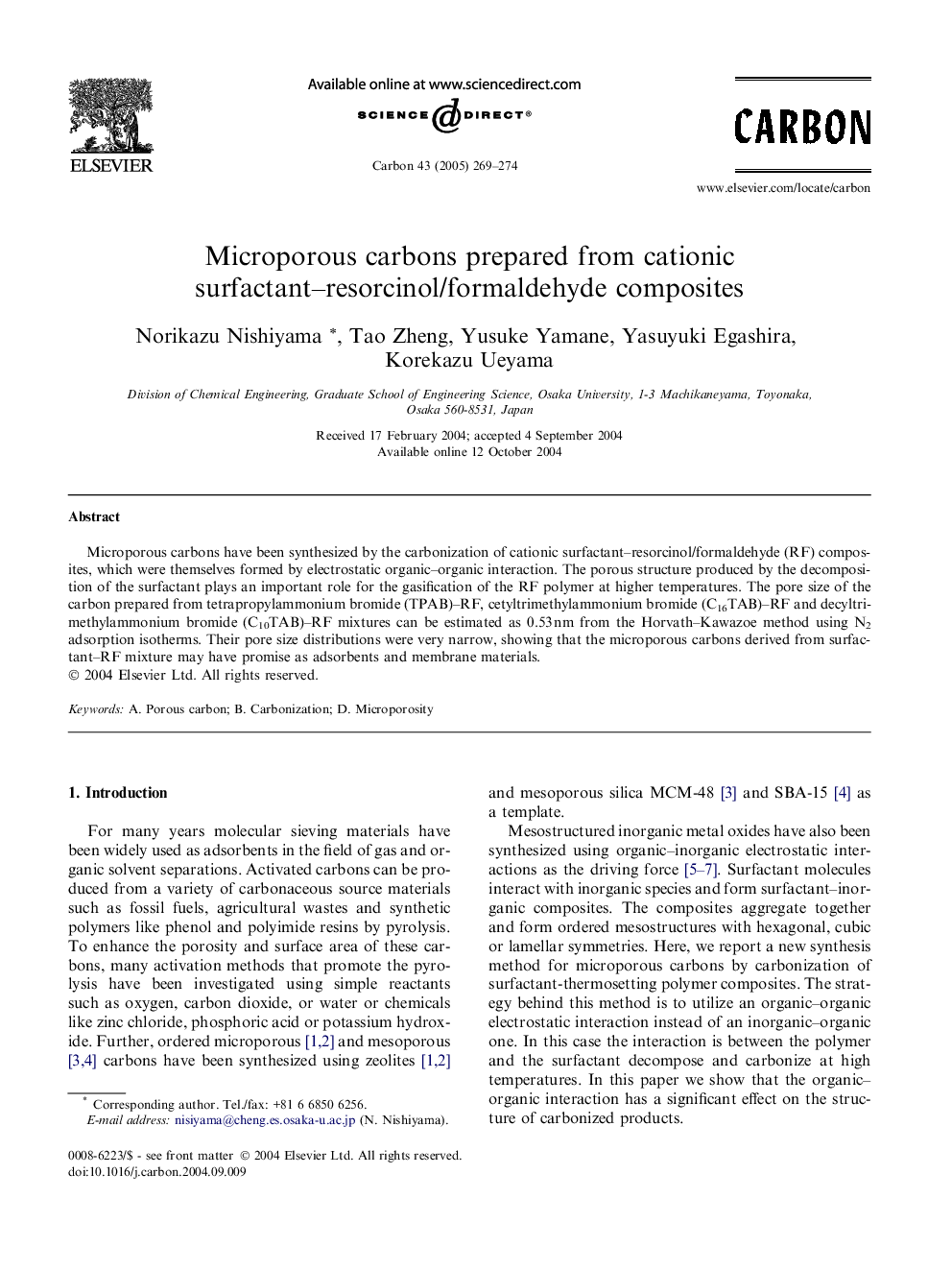| Article ID | Journal | Published Year | Pages | File Type |
|---|---|---|---|---|
| 10611358 | Carbon | 2005 | 6 Pages |
Abstract
Microporous carbons have been synthesized by the carbonization of cationic surfactant-resorcinol/formaldehyde (RF) composites, which were themselves formed by electrostatic organic-organic interaction. The porous structure produced by the decomposition of the surfactant plays an important role for the gasification of the RF polymer at higher temperatures. The pore size of the carbon prepared from tetrapropylammonium bromide (TPAB)-RF, cetyltrimethylammonium bromide (C16TAB)-RF and decyltrimethylammonium bromide (C10TAB)-RF mixtures can be estimated as 0.53Â nm from the Horvath-Kawazoe method using N2 adsorption isotherms. Their pore size distributions were very narrow, showing that the microporous carbons derived from surfactant-RF mixture may have promise as adsorbents and membrane materials.
Related Topics
Physical Sciences and Engineering
Energy
Energy (General)
Authors
Norikazu Nishiyama, Tao Zheng, Yusuke Yamane, Yasuyuki Egashira, Korekazu Ueyama,
